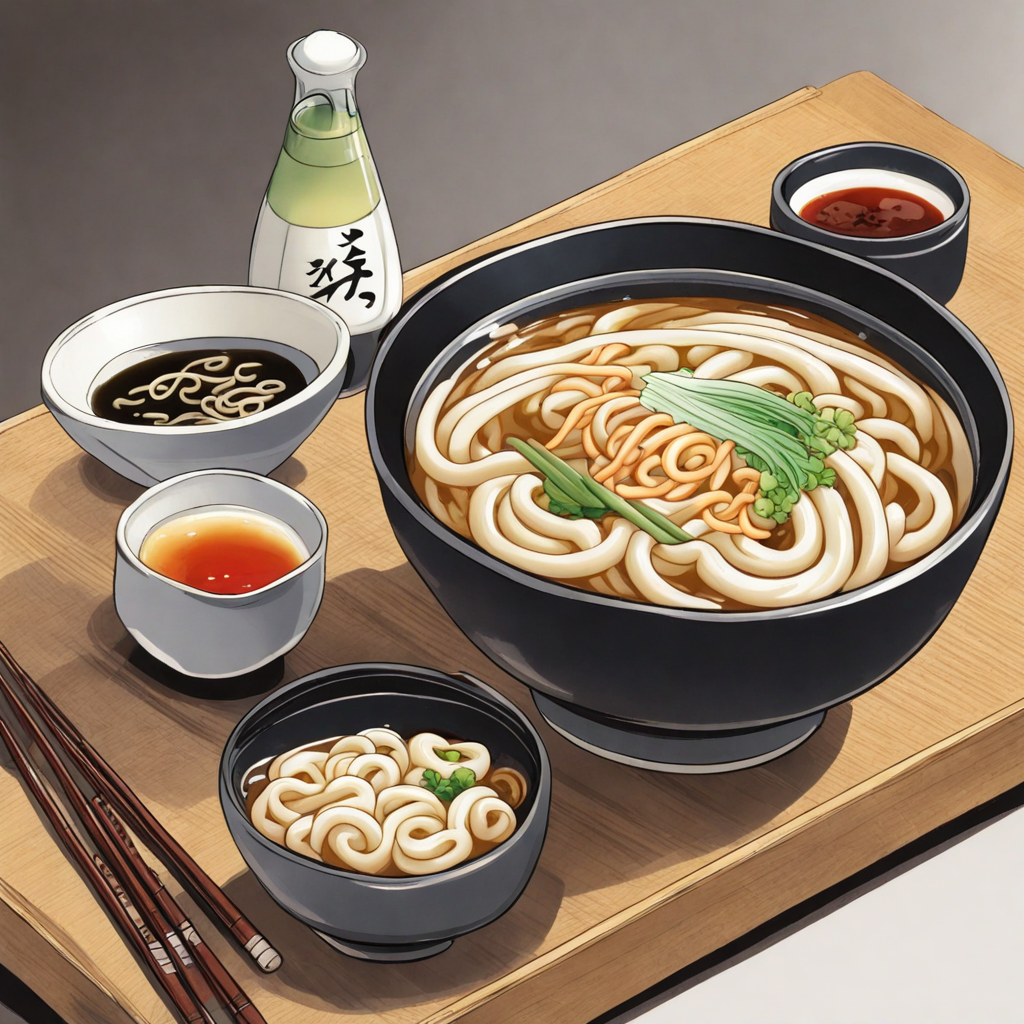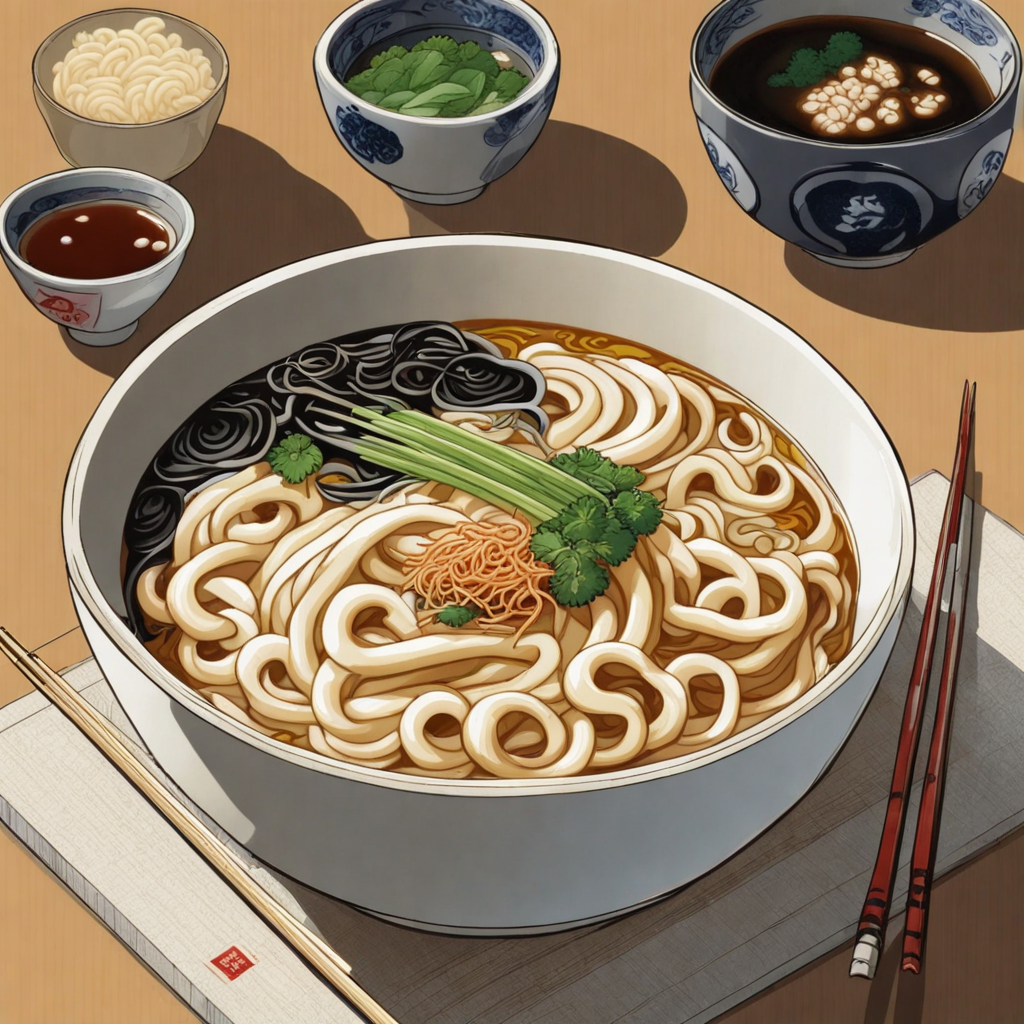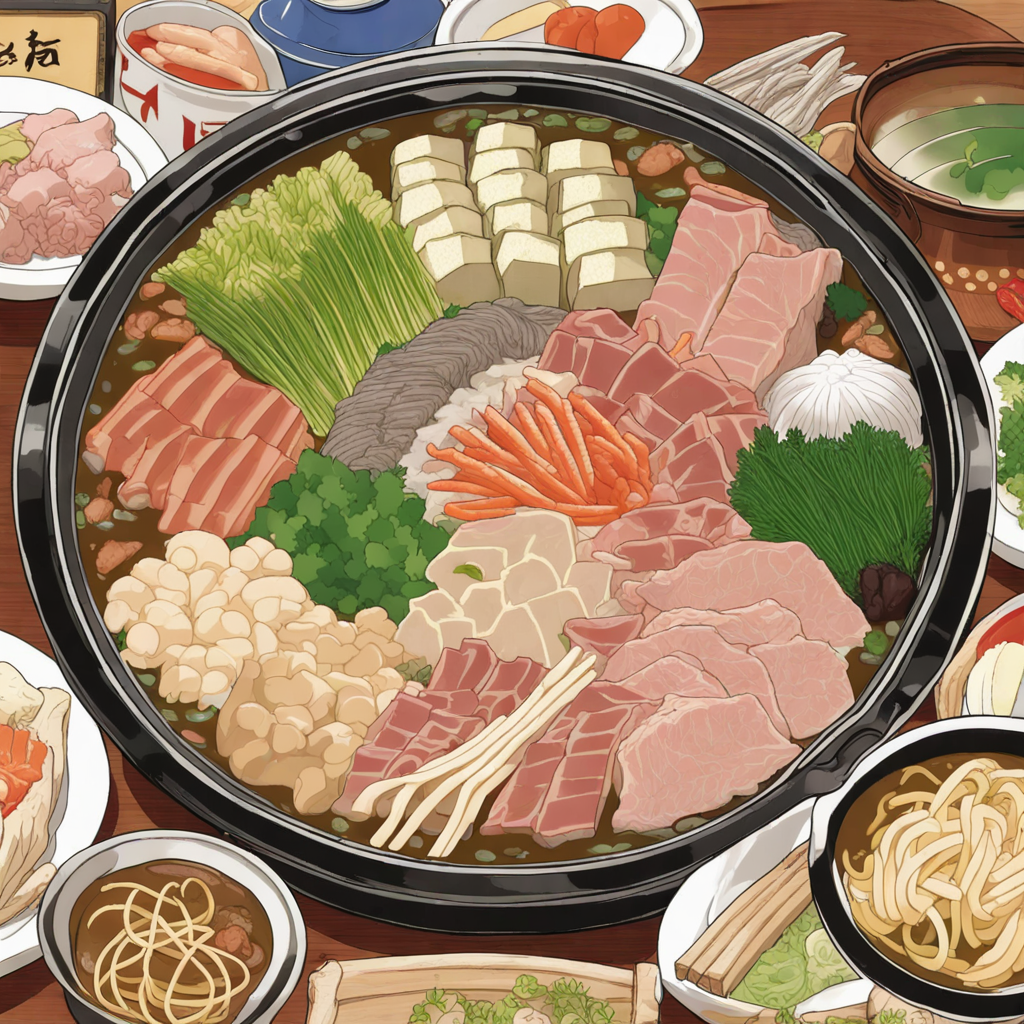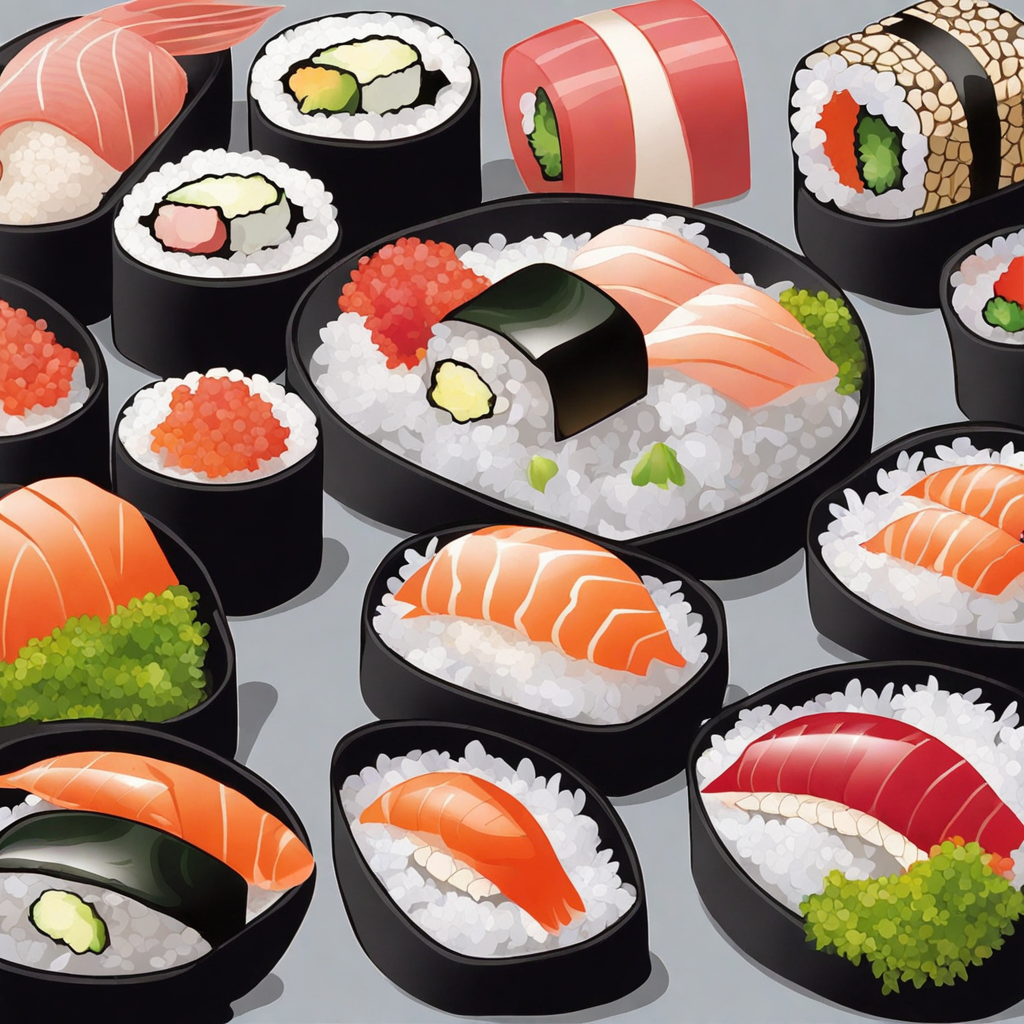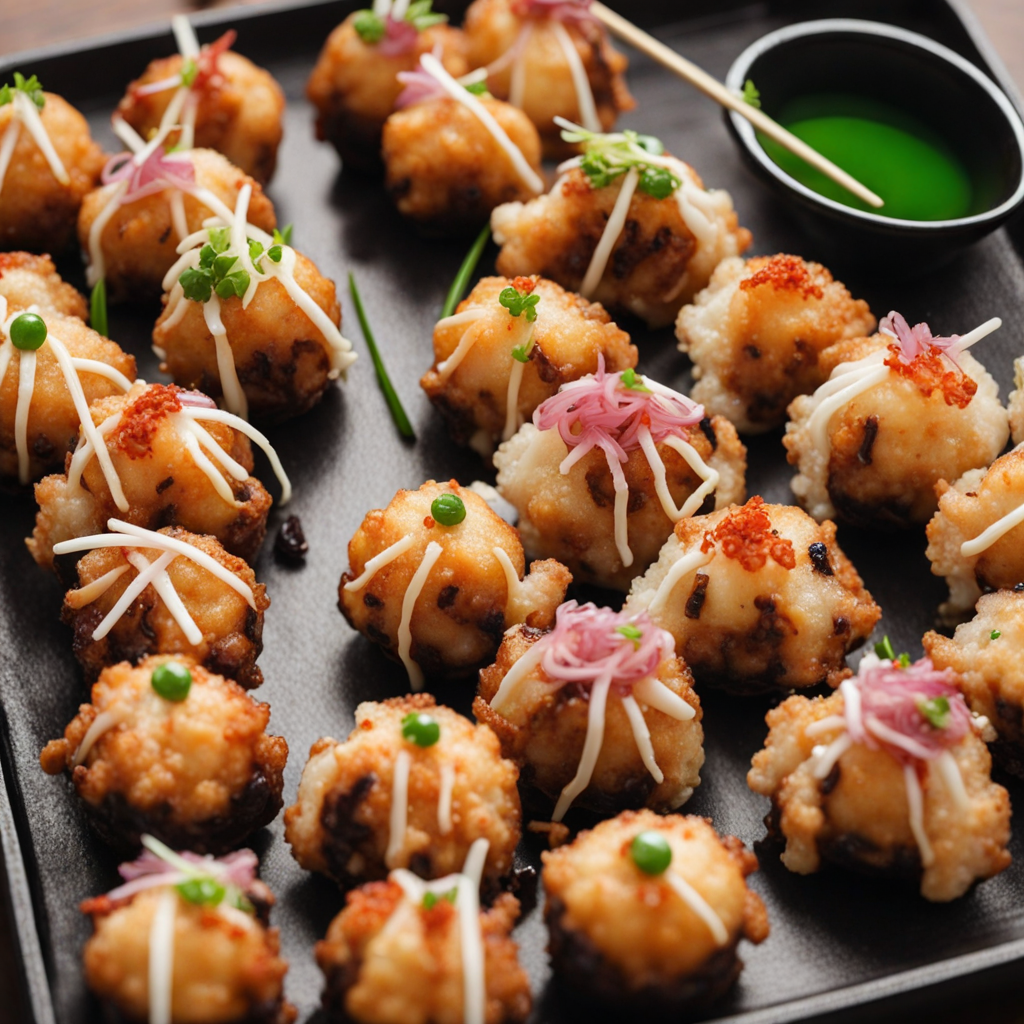Udon
Udon is a traditional Japanese noodle dish that offers a delightful experience for the palate. Made from wheat flour, water, and salt, these thick, chewy noodles are known for their smooth texture and ability to absorb flavors from the broth and accompanying ingredients. Udon can be served in a hot broth, chilled with a dipping sauce, or stir-fried, making it a versatile dish that can be enjoyed in various forms throughout the seasons. The simplicity of its ingredients allows for a wide range of flavors to shine through, making each bowl of udon a unique culinary experience. One of the most popular ways to enjoy udon is in a steaming bowl of kake udon, which features a light, savory broth made from dashi (a Japanese stock), soy sauce, and mirin. Topped with green onions, tempura, or kamaboko (fish cake), this dish showcases the umami-rich flavors typical of Japanese cuisine. Another beloved variation is yaki udon, where the noodles are stir-fried with vegetables, meats, and a sweet soy sauce, creating a hearty and flavorful meal. The contrast in textures and the richness of the ingredients highlight the versatility of udon, making it a comforting dish that can be enjoyed any time of the year. Udon is not just a dish; it’s a cultural experience that invites diners to explore the simplicity and depth of Japanese flavors. Whether you’re slurping up a bowl of udon at a local izakaya (Japanese pub) or preparing it at home, this dish represents the heart of Japanese comfort food. Accompanied by seasonal vegetables, protein, and aromatic toppings, udon can easily be customized to suit various tastes and preferences, ensuring that every bite is a celebration of flavor and texture.
How It Became This Dish
Origins of Udon Udon, a beloved Japanese noodle dish, boasts a rich history that traces back to ancient times. The origins of udon are somewhat obscure, but it is widely believed that these thick wheat noodles were introduced to Japan from China. Historical texts suggest that wheat cultivation began in Japan around the 8th century, likely influenced by the Tang Dynasty's cultural exchanges. The earliest references to udon can be found in the 9th-century Japanese text “Nihon Shoki,” which describes food items that resemble the modern udon we know today. By the Kamakura period (1185-1333), udon gained popularity among the samurai class and was consumed as a staple food. Its simplicity and versatility made it an ideal option for quick meals. The dish's name is thought to derive from the Chinese word “yùndùn,” which means "to knead dough." As the concept of udon spread across Japan, regional variations began to emerge, each reflecting local ingredients and culinary practices. Cultural Significance Udon holds a special place in Japanese culture, transcending mere sustenance to embody a sense of community and tradition. It features prominently in various culinary customs, such as during New Year celebrations and festivals. In many families, making udon from scratch is a cherished activity, often involving family members gathering to knead, roll, and cut the dough. This communal preparation fosters bonds and creates lasting memories, as each member contributes to the process. The dish's cultural significance is further highlighted by its presence in literature and art. Udon is often depicted in ukiyo-e woodblock prints and celebrated in haikus, symbolizing a connection to the earth and the changing seasons. It has also become a popular offering in temples and shrines, where it is associated with purification and good fortune. The act of eating udon is more than a meal; it is a ritual steeped in cultural heritage. Regional Variations As udon spread throughout Japan, distinct regional variations emerged, each showcasing unique flavors and styles. In Kagawa Prefecture, known as the birthplace of Sanuki udon, the noodles are characterized by their chewy texture and are typically served with a simple soy sauce-based broth. This style has become synonymous with udon culture, attracting noodle enthusiasts from across the country. In contrast, in Osaka, the udon is often served in a rich, flavorful dashi broth, accompanied by a variety of toppings such as tempura or green onions. This style is known as "kake udon" and is beloved for its comforting qualities. Further north, in the colder regions like Hokkaido, udon is often enjoyed in hot pots, reflecting the local climate and culinary preferences. Additionally, the dish has also been adapted to incorporate foreign influences. The introduction of curry in the late 19th century led to the creation of curry udon, which blends the traditional flavors of udon with the spiciness of curry, creating a unique culinary fusion that continues to be popular today. Modern Udon In the contemporary culinary landscape, udon has evolved and adapted to changing tastes and lifestyles. The rise of convenience culture has led to the widespread availability of instant udon noodles, which can be prepared quickly and easily, catering to a fast-paced society. These instant varieties often come in plastic cups or bags, making them a popular choice for busy individuals and students. Despite the proliferation of instant options, many people still cherish authentic udon experiences, leading to a resurgence of interest in artisanal noodle-making. Specialty udon shops have emerged, where chefs craft handmade noodles using traditional methods and high-quality ingredients. These establishments often highlight regional specialties and seasonal toppings, providing diners with a deeper appreciation for the art of udon preparation. Furthermore, udon has found its way into international cuisine. As Japanese food continues to gain popularity worldwide, many restaurants offer udon dishes that incorporate local ingredients and flavors. From udon stir-fries to fusion dishes, the adaptability of udon has allowed it to transcend geographical boundaries while maintaining its fundamental characteristics. Udon in Global Cuisine The globalization of food culture has played a significant role in the dissemination of udon. As people travel and share their culinary experiences, udon has become a staple in many international menus. In the United States and Europe, for example, udon is often featured in Japanese restaurants, where it is celebrated for its hearty texture and versatility. Chefs around the world have embraced udon as a canvas for creativity, experimenting with flavors and techniques that blend traditional Japanese cuisine with local ingredients. This fusion has led to innovative dishes such as udon salads, udon tacos, and even udon burgers, showcasing the noodle's adaptability and appeal. Moreover, the increasing interest in Japanese cuisine has encouraged home cooks to experiment with udon as well. Cooking classes and online tutorials have made it easier for people to learn the art of making udon from scratch, allowing them to connect with Japanese culinary traditions in their own kitchens. Conclusion Udon is not merely a dish; it is a cultural artifact that reflects Japan's history, regional diversity, and evolving culinary landscape. From its origins as a simple wheat noodle to its status as a global food icon, udon embodies the spirit of adaptability and community. Whether enjoyed in a traditional setting or reimagined in modern cuisine, udon continues to be a cherished symbol of Japanese culinary heritage, inviting people to gather, share, and savor the experience of a timeless dish. In essence, udon represents the intersection of history, culture, and innovation, making it a fascinating subject for food historians and enthusiasts alike. As Japan continues to evolve, so too will udon, ensuring its place at the table for generations to come.
You may like
Discover local flavors from Japan


